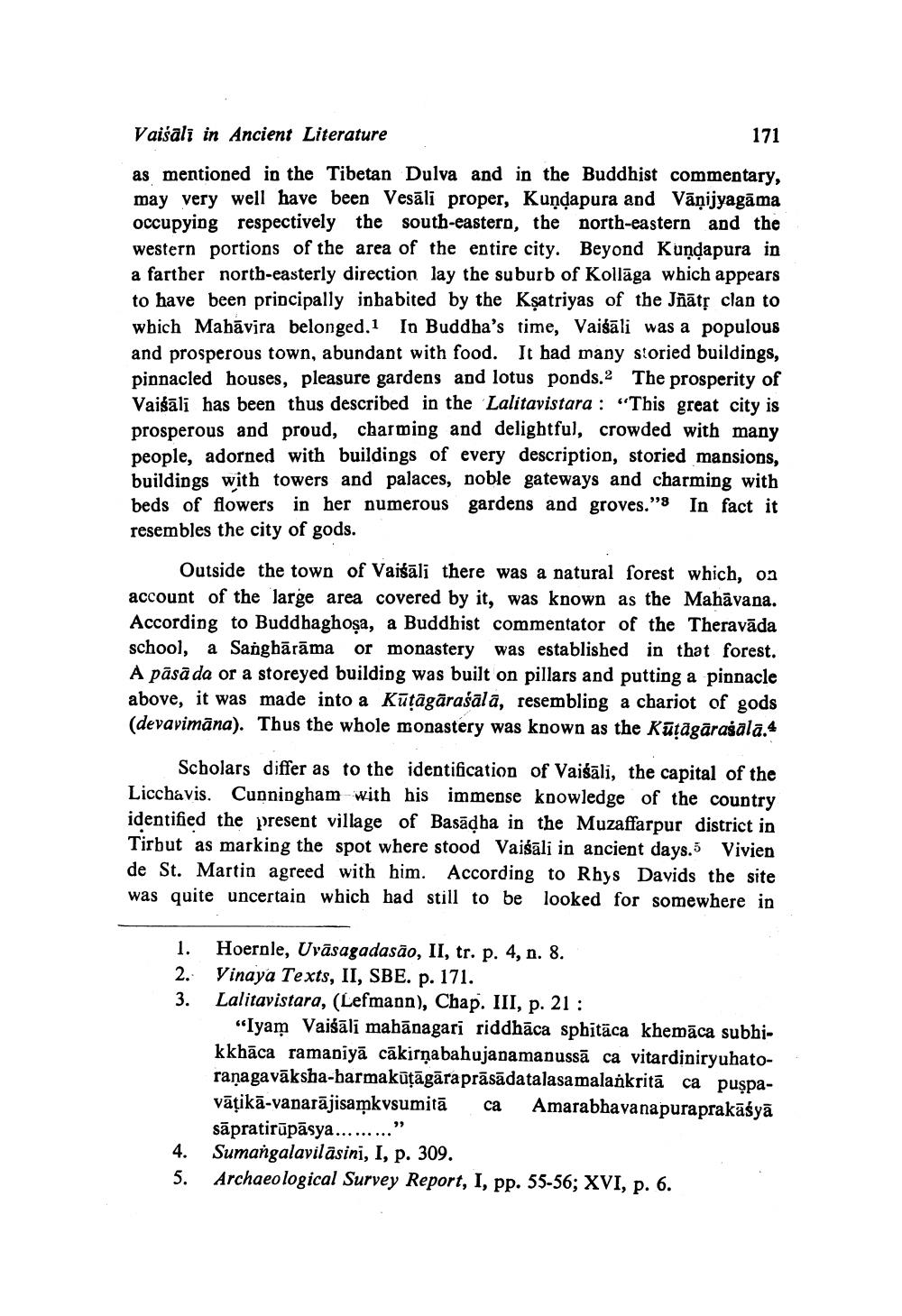________________ Vaisali in Ancient Literature 171 as mentioned in the Tibetan Dulva and in the Buddhist commentary, may very well have been Vesali proper, Kundapura and Vanijyagama occupying respectively the south-eastern, the north-eastern and the western portions of the area of the entire city. Beyond Kundapura in a farther north-easterly direction lay the suburb of Kollaga which appears to have been principally inhabited by the Ksatriyas of the Jnats clan to which Mabavira belonged.1 In Buddha's time, Vaisali was a populous and prosperous town, abundant with food. It had many storied buildings, pinnacled houses, pleasure gardens and lotus ponds.2 The prosperity of Vaigali has been thus described in the Lalitavistara : "This great city is prosperous and proud, charming and delightful, crowded with many people, adorned with buildings of every description, storied mansions, buildings with towers and palaces, noble gateways and charming with beds of flowers in her numerous gardens and groves." In fact it resembles the city of gods. Outside the town of Vaisali there was a natural forest which, on account of the large area covered by it, was known as the Mahavana. According to Buddhaghosa, a Buddhist commentator of the Theravada school, a Sangbarama or monastery was established in that forest. A pasa da or a storeyed building was built on pillars and putting a pinnacle above, it was made into a Kutagarasala, resembling a chariot of gods (devavimana). Thus the whole monastery was known as the Kutagarasala.4 Scholars differ as to the identification of Vaisali, the capital of the Licchavis. Cunningham with his immense knowledge of the country identified the present village of Basadha in the Muzaffarpur district in Tirbut as marking the spot where stood Vaisali in ancient days.5 Vivien de St. Martin agreed with him. According to Rhys Davids the site was quite uncertain which had still to be looked for somewhere in 1. 2. 3. Hoernle, Uvasagadasao, II, tr. p. 4, n. 8. Vinaya Texts, II, SBE. p. 171. Lalitavistara, (Lefmann), Chap. III, p. 21 : "Iyam Vaisali mahanagari riddhaca spbitaca khemaca subhikkhaca ramaniya cakirnabahujanamapussa ca vitardiniryuhatoranagavaksha-barmakutagaraprasadatalasamalankrita ca puspavatika-vanarajisamkvsumita ca Amarabhavanapuraprakasya sapratirupasya........." Sumangalavilasini, I, p. 309. Archaeological Survey Report, I, pp. 55-56; XVI, p. 6. 4. 5.




